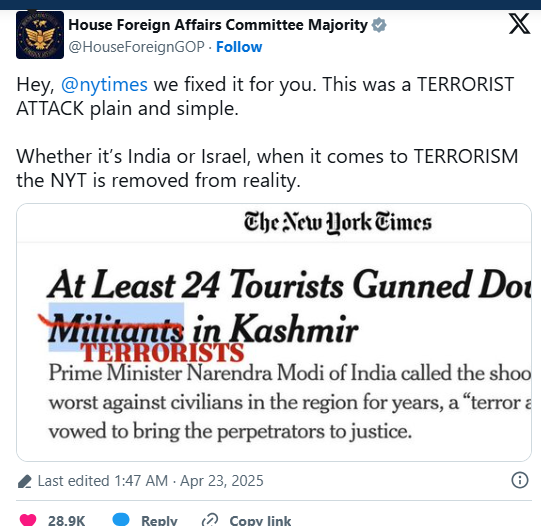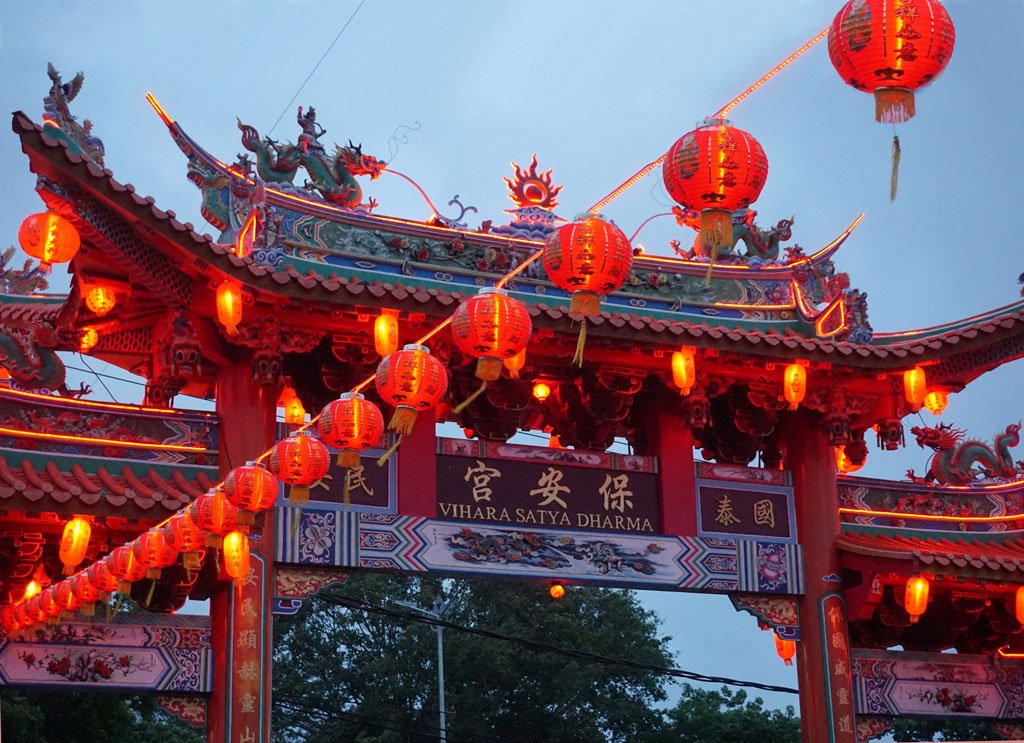When a deadly attack struck a bus carrying Hindu pilgrims in Pahalgam, Kashmir, earlier this month, much of the Indian media and political establishment were quick to label it for what it was: a terrorist attack. The victims were unarmed civilians, including women and children, targeted in a brutal assault. But when The New York Times reported the incident, it chose a different word—“militants.”
That choice of language did not go unnoticed, especially in India, where terms like “terrorist” and “militant” carry not just semantic weight but geopolitical implications. Critics argue that using “militant” downplays the severity and ideological motivations of such attacks, while offering an undeserved veil of neutrality to the perpetrators.
The response from the Indian public and officials was swift, with many calling out the discrepancy in terminology, particularly in how similar events are covered when they happen in the West. “If this had happened in New York or London,” one Indian commentator wrote, “it wouldn’t be described as a ‘militant attack.’ It would rightly be called terrorism.”
Adding further dimension to the debate, the U.S. State Department issued a statement condemning the Pahalgam incident as a terrorist attack, aligning its official language with the Indian government’s characterization rather than with that of The New York Times. A spokesperson reiterated America’s position that targeting innocent civilians for political or ideological aims constitutes terrorism, regardless of the terminology used by media outlets.
“We fixed it for you” – USA Government
The Foreign Affairs Committee of the United States government took to social media to publicly call out The New York Times article over its news report, describing it as being “removed from reality”. The NYT headline read ‘At Least 24 Tourists Gunned Down by Militants in Kashmir’.
“This was a terrorist attack, plain and simple,” noted the US government, adding that “Whether it’s India or Israel, when it comes to terrorism, the NYT is removed from reality.”
The post also shared a photo with the correction made on NYT’s behalf, saying, “Hey, NYT, we fixed it for you.”

This divergence between journalistic and diplomatic language has raised broader questions about how the media frames acts of violence depending on region, religion, and political context. Critics say that selective vocabulary can subtly shape international perception, influence policy discussions, and even fuel misinformation.
For many Americans reading about conflicts abroad, the difference between “militant” and “terrorist” may seem academic. But for those living through the violence, especially in regions like Kashmir, it is anything but. Language, in this context, is not just descriptive—it is political.
As global citizens and news consumers, we owe it to ourselves to question not only the facts we are presented with, but the language used to present them.






